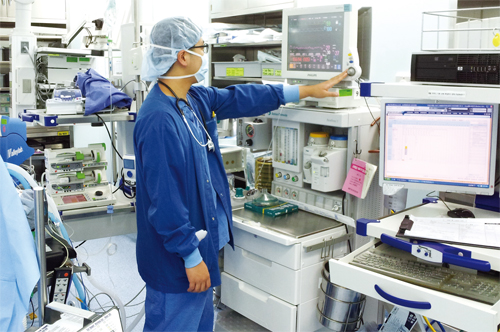Departments/Faculties
KNU School Of MedicineDepartment
| Department | Department of Anesthesiology and Pain Medicine |
|---|---|
| Introduction | Basic research
1. Monitoring of the depth of anesthesia: Through EEG monitoring, the anesthetic effects on the changes of spectrum of brain waves were conducted.
2. Biomedical engineering and drug delivery system: The department is interested in the cell transplantation, which could provide analgesic effects. The analgesic effects of transplantation of chromaffin cells into the central nervous system (CNS) have been investigated using neuropathic pain model.
3. Pain mechanism: We revealed that superoxide, nitric oxide (NO), and their interactive metabolite, peroxynitrite are important reactive oxygen species (ROS) to develop ipsilateral and contralateral allodynia. Moreover, these ROS enhance phosphorylation of NMDA receptor in the spinal cord to induce central sensitization in the chronic post-ischemia pain (CPIP) model. Also, our current research is directed to establishing the role of mitogen activated protein kinase (MAPK)-, PKA-, or PKCdependent intracellular signaling in controlling central sensitization in the CPIP model. Hopefully, our ongoing research will increase the knowledge about the pathophysiology of CRPS and the development of novel therapeutic regimens.
4. Cardiovascular research: The effects of remifentanil on the extent of acute myocardial infacrtion are studied.
Clinical research
1. Pain 2) Vitamin C: Herpes zoster (HZ) is characterized by vesicular eruptions in a dermatome distribution followed by painful neuralgia. The effects of intravenous administration of 4 grams of vitamin C, an antioxidant, will be studied to reduce the pain in patients with herpes zoster or idiopathic sudden sensorineural hearing loss (ISSHL).
2. Postoperative nausea and vomiting
3. Cardiovascular-hemodynamics research
4. Anesthetic pharmacology
|
| Professors | Chairman: Sungsik Park, MD, PhD(sspark@knu.ac.kr)
|
